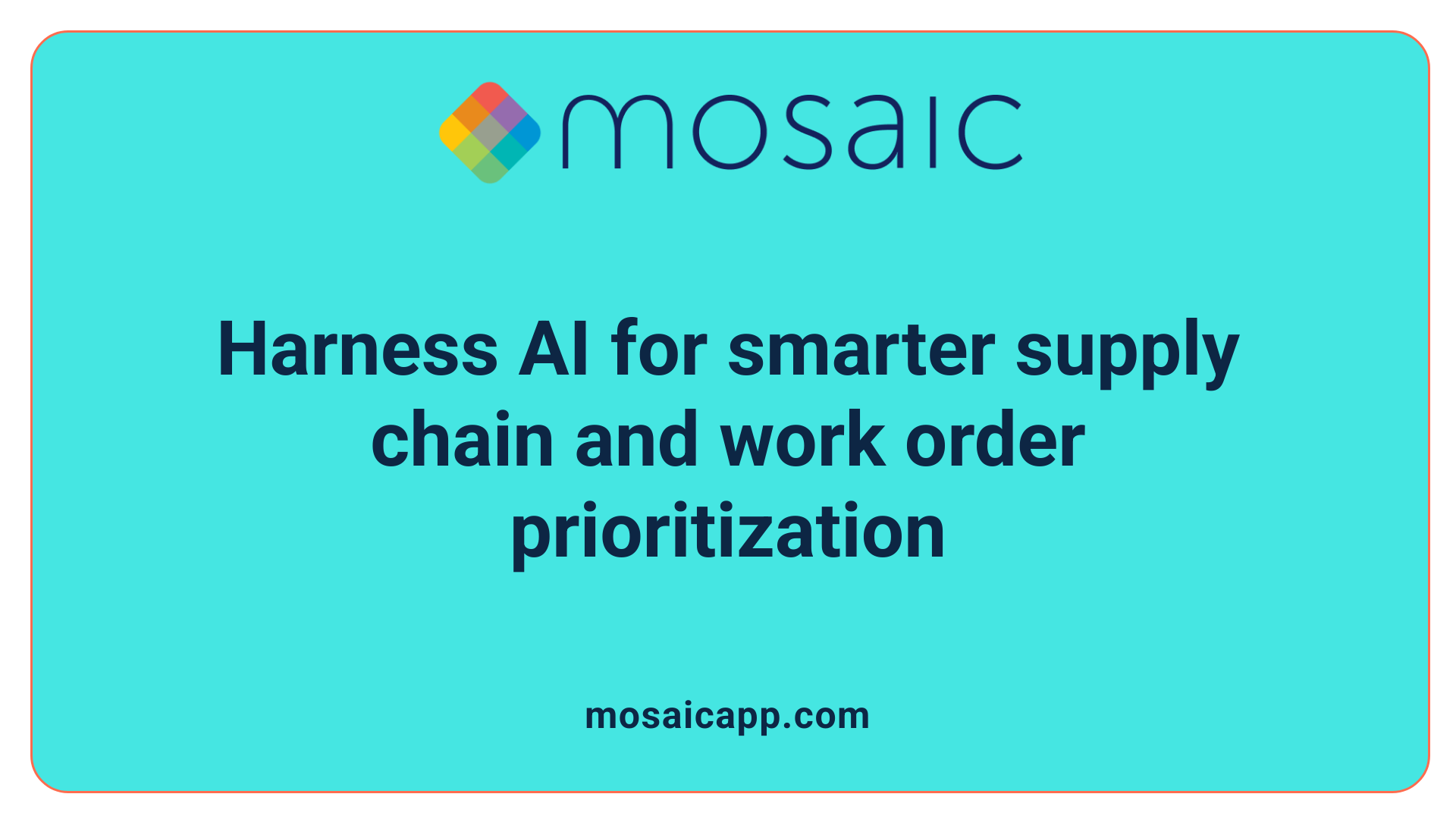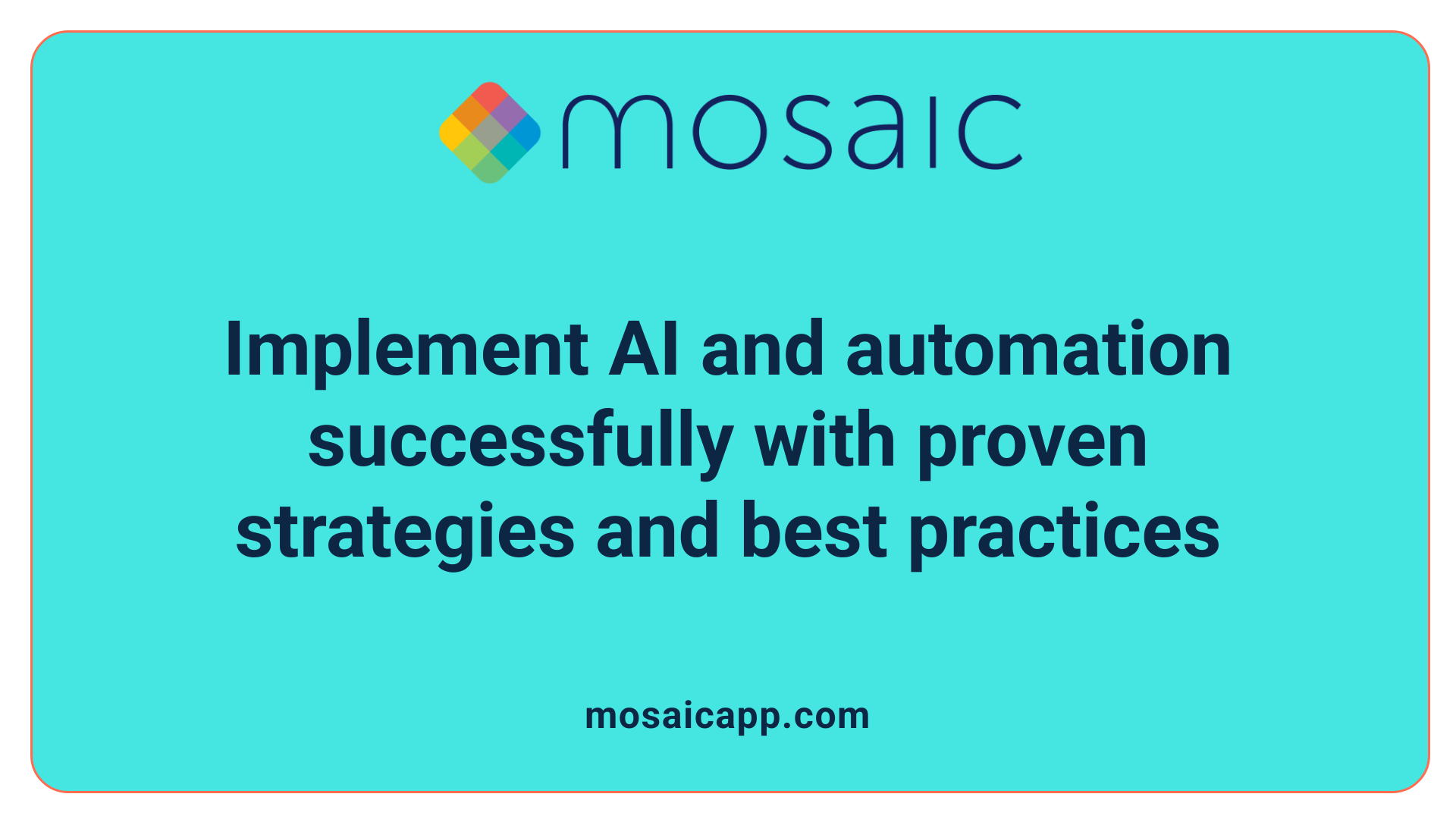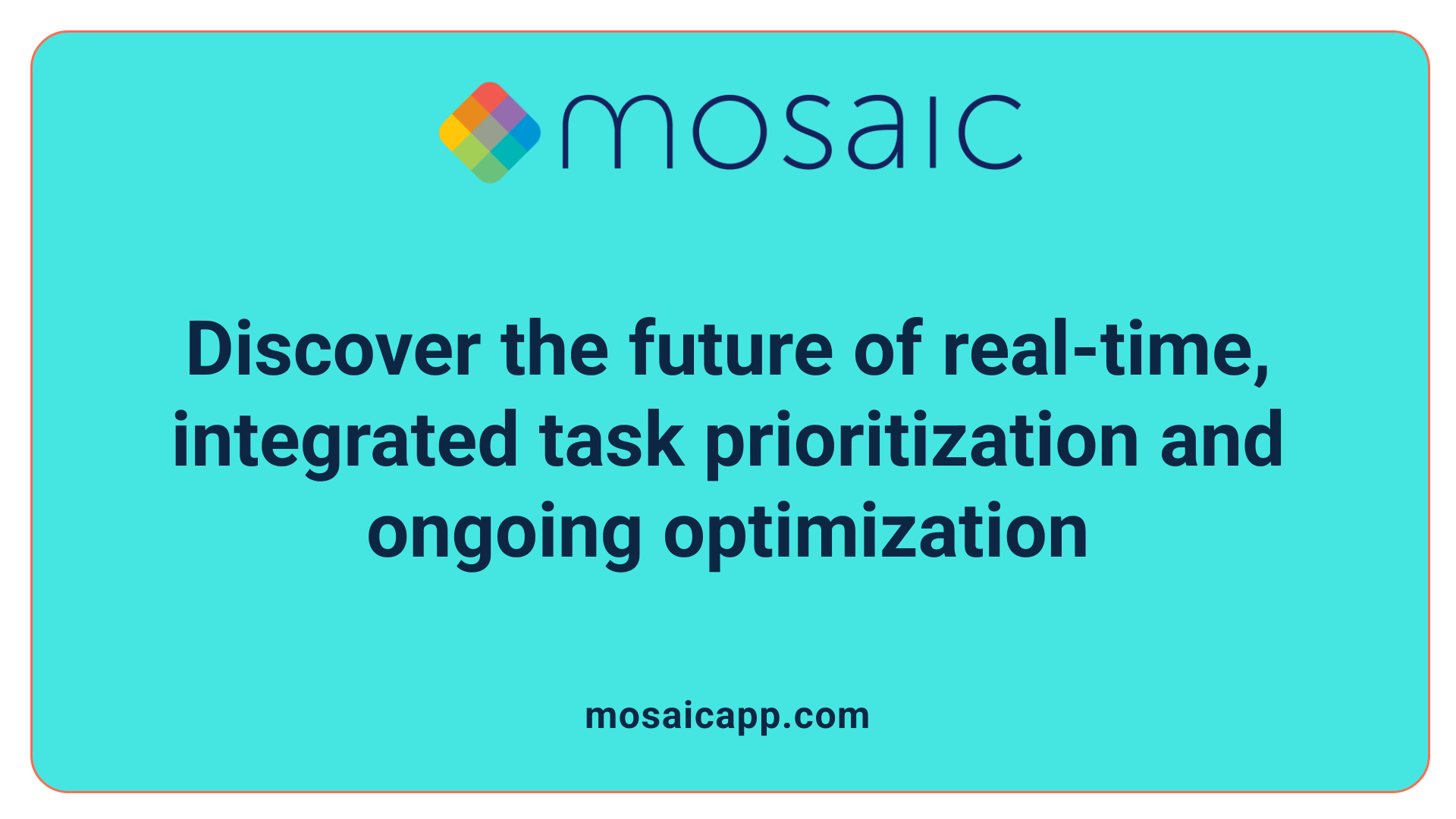Transforming Workflow Efficiency with Advanced Prioritization Tools
The evolution from manual to intelligent task prioritization signifies a pivotal shift in organizational operations, driven by technological advancement and data-centric strategies. By leveraging AI and sophisticated methodologies, companies can dramatically improve decision-making, resource allocation, and overall operational performance, setting the stage for a more agile, efficient, and resilient future.
The Shift from Manual to Automated Prioritization: Enhancing Workflows and Outcomes
How does the transition from manual to automated and intelligent task prioritization impact workflow efficiency?
Shifting from manual to AI-powered task prioritization significantly boosts workflow efficiency. Manual processes often involve chaotic scheduling, overlooked dependencies, and inconsistent decision-making, which lead to delays and frustration. AI systems, on the other hand, analyze a multitude of variables at once—such as urgency, business impact, deadlines, and task dependencies—allowing teams to focus on high-value work.
These intelligent tools enable real-time updates and dynamic schedule adjustments, considering external factors like market trends or competitor actions. Integration with existing project management software such as Jira, Trello, or Asana makes automation seamless, ensuring that task priorities stay aligned with evolving project requirements.
AI-driven prioritization also reduces manual effort, saving between 30-50% of time typically spent organizing and reassigning tasks. By proactively adjusting deadlines and resource allocations, it leads to improved deadline adherence, often increasing compliance by up to 89%. This shift not only streamlines operations but also fosters a faster, more responsive work environment that can adapt to shifting priorities and external pressures.
Enhanced decision-making accuracy, reduced operational bottlenecks, and better resource utilization translate into more productive teams and satisfied stakeholders. Overall, automated, data-driven prioritization helps organizations complete more tasks efficiently while aligning workflows with strategic objectives.
This transformation in task management tools leverages AI's capacity to analyze 15-20 variables per task—enabling smarter, faster decisions. By integrating real-time external data and internal team capacity, organizations can optimize their workload distribution and improve overall productivity. Wise use of AI thus creates a proactive approach to task management, ensuring efficient processes, timely deliverables, and improved organizational outcomes.
For more insights, search for "AI-driven task prioritization benefits."
Data-Driven Decision Making: The Backbone of Operational Excellence

What role does data-driven decision-making play in improving operational efficiency?
Data-driven decision-making is fundamental to streamlining operations and enhancing overall efficiency. When organizations rely on accurate and relevant data, they gain clear insights into current performance, enabling smarter planning and resource management.
Advanced analytical tools like predictive analytics and machine learning process numerous variables simultaneously, helping teams forecast trends and identify inefficiencies before they escalate. Visual dashboards and KPI tracking tools translate complex data into actionable insights, making it easier for decision-makers to monitor progress and adjust strategies on the fly.
Creating a culture rooted in data involves establishing governance practices that ensure data accuracy, consistency, and security. This foundation allows stakeholders to trust the data, making faster and more reliable decisions.
A continuous cycle of analysis and outcome assessment refines operational processes over time. Regular monitoring of KPIs helps organizations recognize areas needing improvement, identify resource gaps, and optimize workflows.
In summary, integrating data-driven approaches transforms operational management from reactive to proactive. These practices reduce waste, lower costs, and boost productivity, ultimately strengthening the organization’s competitive edge.
Methodologies Enhancing Maintenance and Field Operations

What methodologies, such as Analytic Hierarchy Process (AHP), are used to enhance maintenance management and field service operations?
In maintenance management and field service operations, structured decision-making methodologies like the Analytic Hierarchy Process (AHP) and broader Multi-Criteria Decision Making (MCDM) frameworks are crucial. These approaches help evaluate numerous factors—such as safety, cost, reliability, and resource availability—in a systematic way.
AHP involves breaking down complex decisions into a hierarchy of criteria and alternatives. Practitioners perform pairwise comparisons between criteria and options, assigning relative importance scores. For example, when selecting a maintenance strategy, AHP helps compare preventive, predictive, and corrective methods based on criteria like cost-effectiveness, safety impact, and operational feasibility.
The process includes calculating weights from these comparisons, which highlight the most suitable options according to prioritized criteria. These weights guide decision-makers toward strategies that optimize resource use, reduce downtime, and improve safety.
Integrating expert judgment is vital in this process, especially when uncertainties arise. Techniques like Fuzzy AHP incorporate uncertain or imprecise data by applying fuzzy logic, which enhances decision robustness.
The application of AHP and similar methods results in more transparent, justifiable, and efficient maintenance planning. By systematically considering multiple factors, organizations can better determine the most appropriate maintenance types—whether preventive, predictive, or reactive—tailored to their specific operational needs.
Overall, these decision-support tools aid in balancing safety, cost, and performance goals. They enable continuous improvement by providing insights into trade-offs and sensitivities through sensitivity analysis, ultimately fostering smarter, data-driven maintenance and field service strategies.
Intelligent Prioritization in Supply Chain and Work Order Management
 How can intelligent prioritization be applied to supply chain and work order management?
How can intelligent prioritization be applied to supply chain and work order management?
Implementing intelligent prioritization transforms how supply chains and work orders operate, leveraging AI and machine learning to handle large data volumes efficiently. These technologies enable precise demand forecasting by analyzing historical sales patterns, current market conditions, and predictive analytics. This results in optimized inventory levels, reducing excess stock and shortages.
In addition, AI-powered systems facilitate real-time decision-making, crucial for managing sudden disruptions like supplier delays or spikes in demand. IoT devices provide live data on equipment status and inventory locations, helping organizations reallocate resources swiftly and adjust schedules proactively.
Dynamic task prioritization is achieved through sophisticated analytics that consider multiple variables, including costs, delivery deadlines, and environmental impact. Autonomous systems combine these insights to identify optimal workflows, minimizing bottlenecks and maintaining operational flow.
Furthermore, AI can assist in balancing competing priorities such as reducing costs, speeding up delivery, and maintaining sustainability. For example, routing logistics to lessen emissions while meeting deadlines enhances supply chain resilience.
By embracing these advanced technologies, companies achieve greater transparency, agility, and efficiency. They can proactively respond to change, anticipate risks, and make well-informed decisions that align with strategic business goals.
Overall, intelligent prioritization helps streamline operations, improve resilience, and foster an adaptable, data-driven supply network.
| Technology | Role in Prioritization | Impact |
|---|---|---|
| Machine Learning | Demand forecasting, inventory optimization | Reduced stockouts and overstock, increased forecast accuracy |
| IoT | Real-time data on equipment, inventory, and environment | Swift disruption response, efficient resource allocation |
| Analytics | Work sequence optimization and risk assessment | Bottleneck reduction, better decision-making |
| Autonomous Systems | Workflow automation and task scheduling | Reduced manual effort, enhanced operational speed |
| AI-driven Insights | Balancing cost, environmental impact, speed | Sustainable, cost-effective, and timely operations |
Sources and further reading: AI in supply chain management
Strategies for Implementing AI and Automation Effectively
 To successfully adopt AI and automation in task and resource management, organizations must focus on several critical strategies.
To successfully adopt AI and automation in task and resource management, organizations must focus on several critical strategies.
First, robust data collection and integration are fundamental. This involves gathering high-quality, comprehensive data from various sources such as project management tools, team schedules, external factors like market trends, and performance metrics. Integrating this data into a centralized system ensures AI algorithms have accurate, real-time information to analyze, which enhances decision-making.
Second, clear goal setting and success metrics guide the implementation process. Define specific objectives such as reducing missed deadlines, optimizing workload distribution, or improving customer satisfaction. Establishing measurable success criteria—like a 30% decrease in project delays or increased task prioritization accuracy—helps track progress and refine strategies.
Third, leverage predictive analytics and real-time monitoring to dynamically adjust resource allocation. Continuous tracking of project variables, team capacity, and external influences allows AI systems to anticipate potential delays or bottlenecks, enabling preemptive adjustments that maintain efficiency.
Effective change management is also vital. This includes training teams on new tools and workflows, maintaining open communication channels to address concerns, and actively engaging stakeholders at all levels. These practices foster acceptance and encourage optimal use of AI capabilities.
Lastly, establishing governance, ethical standards, and continuous improvement mechanisms ensures responsible AI deployment. Implementing oversight frameworks for data privacy, security, and fairness prevents misuse and bias. Regularly analyzing system performance and updating AI models based on evolving data guarantees sustained relevance and optimization.
By following these strategies, organizations can harness AI and automation to transform task prioritization and resource management, leading to increased efficiency, better decision-making, and a more adaptable work environment.
The Future of Task Prioritization: Integration and Continuous Optimization

What is the future of task prioritization and how will continuous optimization evolve?
The landscape of task prioritization is moving towards highly automated and constantly improving systems. Future advancements will enable AI to deliver real-time updates effortlessly, adjusting task priorities dynamically as new data, project changes, and external influences emerge.
Integration with project management platforms like Jira, Trello, and others will become more seamless, allowing workflows to be synchronized across multiple tools. This holistic approach ensures that all task-related information remains consistent and accessible, reducing manual effort and errors.
Natural language processing (NLP) will play a significant role by analyzing emails, messages, and notes to classify and delegate tasks instantly. This technology will help organizations quickly identify urgent issues and assign resources more efficiently.
Predictive analytics will forecast future workload, importance, and potential bottlenecks, enabling teams to plan proactively. By anticipating future needs, organizations can allocate effort where it’s needed most before problems occur.
Moreover, dashboards and visual analytics will provide managers with comprehensive, real-time insights into team performance, workload distribution, and project status. These tools will make decision-making faster and more accurate.
As these innovations continue to evolve, task prioritization will become more intuitive, adaptive, and embedded within everyday workflows. The ability to constantly refine and optimize tasks will ensure that organizations stay agile, respond quickly to changes, and operate at peak efficiency.
Embracing the New Paradigm in Task Management
Transitioning from manual to intelligent prioritization transforms organizational effectiveness by harnessing data, AI, and advanced methodologies. This shift enables proactive, precise, and agile decision-making, reduces wastes, and optimizes resource utilization. As these technologies continue to evolve, organizations will unlock new levels of productivity, innovation, and competitive advantage, making intelligent task prioritization the cornerstone of future operational excellence.
References
- How AI Improves Task Prioritization: Step-by-Step
- Towards an intelligent prioritization flow of interventions in ...
- Complete Your Work Orders by Mastering Allocation ...
- How AI Automates Task Prioritization: Step-by-Step Guide
- AI Automated Order Allocation Saves Time, Money, and ...
- Boost Process Efficiency with ProHance's Intelligent Priority ...
- Can AI Help PM Prioritize Tasks Using the Eisenhower Matrix
- Leveraging AI for Dynamic Resource Allocation in Complex ...
- AI-Driven Resource Allocation: 10 Best Practices
- Using AI for Dynamic Resource Allocation and Scaling ...


